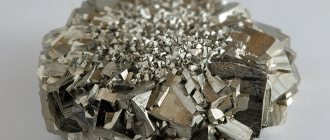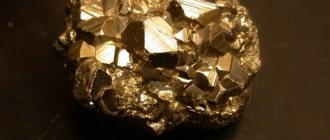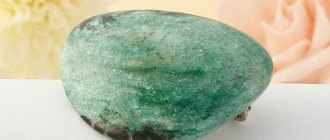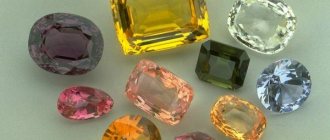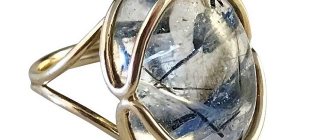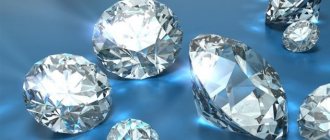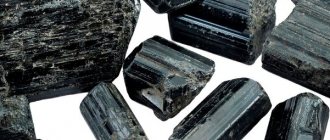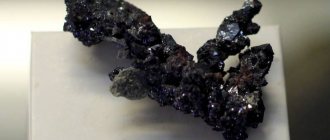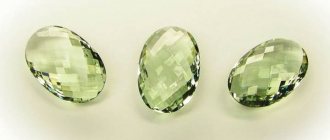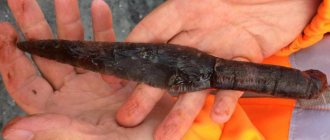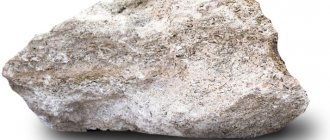Pyrite stone is called "fool's gold."
The name is rather humorous, but the resemblance to gold also brought a lot of grief, especially to the indigenous people of Central and South America. It was because of the deposits of this mineral that a rumor spread that the lands of the Incas were full of gold deposits. They said that the Indians were literally drowning in jewelry. This attracted the conquistadors, and the subsequent events are known to everyone: the ancient Indian civilizations fell, about 80 percent of the population died due to disease, during conquest or under conditions of slavery. Among the properties of pyrite stone, not only its similarity with a noble metal is noteworthy. There is also a practical thing: you can make sparks with it. Therefore, in the old days, the mineral was used instead of matches and lighters. Actually, its name just means “flint” in translation from Greek. In the scientific community, the name is more prosaic - sulfur, or iron pyrite.
Origin of pyrite
It is no coincidence that the name pyrite means “carving fire.” The fact that the mineral can be used as a primitive “lighter” was known already in the Stone Age: its properties are such that when struck correctly, the gem gives a good spark.
In Europe, by the 16th century, flint deposits had already been exhausted, but in Central and South America they were not. But when the conquistadors found bright yellow stones, loaded them onto ships and sent them home, educated people laughed at them. To be fair, the notorious “Inca gold” did exist, but sulfur pyrites had nothing to do with it. During the Gold Rush, prospectors also confused the mineral with gold ore. This is probably where “fool’s gold” came from.
In the seventeenth century, the fire mineral became fashionable among jewelers. They were used to highlight the beauty of diamonds, and also to make independent jewelry from the mineral. Under Napoleon, flint and steel were given to women who donated their gold to the needs of the army. So the stone also became a symbol of patriotism, sacrificial love for the homeland.
In the 20th century, inserts imitating gold began to be made from pyrite. To this day it is loved because it is both cheap and beautiful. As for the properties of knocking out fire, here they have been replaced by lighters and matches, although no one is stopping you from trying.
Sharing experiences among ancient people
The unexpected findings of Dutch scientists were shared by Science Alert. The researchers figuratively compared the rate of knowledge transfer about methods of making fire with the spread of a forest fire - it was transferred so quickly. Moreover, all this clearly did not happen by chance. According to the author of the scientific work, Katharine MacDonald, until today, scientists were sure that cultural diffusion began only 70 thousand years ago, when Homo sapiens began to settle throughout the Earth.
The exchange of experience greatly accelerated the development of mankind
Cultural diffusion is the process by which members of different nations share cultural elements with each other. In the context of this article, we are talking about ancient people who lived in different parts of the planet, and the cultural element is hand-made fire.
However, the same Katherine Macdonald noted that the discovered evidence of the use of fire proves that ancient people began to share technology much earlier. So, according to new data, the inhabitants of various parts of the world began to regularly use hand-made fire about 400,000 years ago. This is evidenced by numerous traces of fire, such as coal and burnt soil. Researchers also find charred bones, the age of which also indicates the time mentioned above. Once again, it is worth noting that all this happened before the emergence of Homo sapiens. People of this species appeared only 200 thousand years ago.
Place of Birth
There are quite a lot of deposits of the mineral pyrite on Earth, but specimens with jewelry properties are found quite rarely. The stone is mined in Scandinavia, Azerbaijan, the USA, and the Urals. Beautiful minerals are often found in Italy.
Pyrite crystals are most often found near hot springs, sulfur or gold deposits. Hence its second name - gold or sulfur pyrite, although technically pyrite is an ore, not a gem.
When copper, nickel, or zinc are smelted from ore, the “by-product” is also often individual crystals of fire rock. Beautiful and large specimens are found when mining quartz veins.
Aggregates
Mostly found in continuous granular masses or as inclusions in igneous, predominantly basic rocks. In the voids you can find druses of crystals. Oolites are found in sedimentary rocks.
Under natural conditions, oxidation of magnetite very often occurs - a process of martitization, sometimes leading to complete pseudomorphs of hematite into magnetite (martite). The reverse process, known as musketovitization, occurs when hematite undergoes reduction.
Physical and chemical properties of pyrite
Pyrite is one of the most common rocks on our planet. It has many names:
- Inca gold;
- fool's gold;
- gypsy gold;
- sulfur pyrite;
- iron pyrite.
The chemical formula of pyrite is FeS2. Sulfur and iron in pure rock are approximately equal, but, as a rule, there are impurities. The most common of them are cobalt, iron, arsenic, copper, and less commonly gold or nickel.
The physical properties of the mineral include its hardness (6.0 - 6.6 out of 10 on the Mohs scale) and density of about 5 grams per cubic centimeter. This means that the stone is quite heavy.
The crystal lattice is cubic. Melting point is about 1170 degrees Celsius. The mineral has good conductive properties. The metallic shine gives it a unique appearance.
Pyrite, despite its high hardness, is very fragile.
Pyrite is a mineral with hydrophobic properties. This means that upon contact with water, the stone rusts, and after a few years it completely crumbles. Therefore, it must be carefully protected from any moisture.
Crystallographic characteristics
Cubic system; hexaoctahedral c. With. Oh7 Fd3m, Z = 8 a0 = 8.374 A.
Magnetite at - 178° becomes rhombic, a0 - 5.91, b0 = 5.945, c0 = 8.39
The crystal structure is that of an inverted spinel. B[4]A[6]B[6]O4
The structure is the reverse of spinel, since half of the ferric atoms are located in the tetrahedral voids of the closest cubic packing, while the ferrous iron atoms, along with the other half of the ferric atoms, are located in the octahedral voids of the structure. Therefore, the magnetite formula should be written as follows: Fe3+(Fe2+Fe3+) O 4.
Color and varieties of pyrite
The pyrite stone has two “relatives”, similar to it in chemical composition, color and physical properties. These gems are called marcasite and bravoite. The latter, in addition to sulfur and iron, contains a lot of nickel - up to 20 percent. Most often, bravoite is found in veins of nickel ores. Marcasite differs from an ordinary mineral in the structure of its crystal lattice: it changes its shape slightly, but this does not affect the basic properties.
The color of pyrite is light yellow or golden, with a characteristic steely sheen. Its crystals are really very similar to gold ore, so the Spanish conquistadors can be understood why they were fools?
Interestingly, very often pyrite looks like a cubic crystal, perfectly smooth and even. It is very difficult for many people to believe that such geometrically perfect shapes were created by nature and not by man. And yet this is true.
There are rare color variations that are valued by jewelers more than the common mineral. These include rainbow pyrite with multi-colored cleavage. Large crystals of this type are found very rarely, and by the standards of non-precious stones they are quite expensive.
Description
Pyrite has another interesting property. When a stone hits a stone, a spark is struck, which is why in literary works the mineral was called “flint.” The Greeks named it for this quality, in Greek pyriteslithos is “stone that strikes fire.”
The amazing similarity of the mineral to gold is not accidental; pyrite is a companion of the precious metal; gold-bearing veins are found near pyrite deposits. The stone itself also often contains impurities of not only gold, but also silver.
Interesting on the topic! Selenite Stone: Magical Moon Kiss
In nature, an opaque gem looks like many crystals of different geometric shapes fused together. Their surface can be smooth or rough and has a metallic sheen. Depending on the impurities and shade, pyrite is divided into two types:
- Marcasite is a stone with a silver tint;
- Bravoite – due to its high nickel content, it has a golden color.
How to distinguish from fake and other stones
The price of pyrite is no higher than that of any other ordinary stone. This is why, and not just because of its similarity to gold, it is passed off as a noble metal. The stone itself is rarely counterfeited, but some scammers still try to sell a piece of coated plastic under the guise of a gem.
To distinguish stone from plastic, simply look at the light. A genuine crystal is opaque. You can also try to scratch the surface of the product - sulfur pyrites are quite hard.
Sometimes marquisite is sold instead of gemstone. It is impossible to distinguish one mineral from another by appearance in the finished product, but it is not particularly necessary. The physical, chemical, healing and magical properties of the stones are almost the same, and they cost about the same.
A much more interesting question is how to distinguish pyrite from gold. Yet firestone and precious metal are very similar in appearance.
- The “tooth test” is an old proven method. Gold is soft and squeezable, unlike firestone.
- A flint can scratch glass or varnished surfaces. Gold - no.
- Products made from pyrite are never filigree - it is unprofitable to do delicate work.
If you remember what pyrite stone looks like and what properties it has, then it will be difficult to deceive you.
Form of mineral occurrence in nature Photo
Crystal Appearance
In accordance with the structure, magnetite crystals are almost always octahedral, but rhombic dodecahedral ones are also known.
Magnetite. Octahedral crystals in slate
The {110} faces are often covered with streaks parallel to the long diagonal of the diamonds. Dendrites appear as nanoparticles in basalt glass under a microscope.
Doubles by (111).
Caring for mineral products
Despite its hardness, the mineral is very fragile and vulnerable. It must be handled with extreme care and delicacy. Pyrite rings are especially vulnerable. They are afraid of moisture (like all authigenic, that is, sedimentary, structures). High temperatures and shocks have a bad effect on them.
There is no need to be afraid of spontaneous combustion of pyrite, as in mines, but it is still advisable to keep it away from open fire. Accept in advance that products made from pyrite will not last you long: within five to six years, the talisman will begin to lose its noble shade.
To preserve the stone better, you can coat it with varnish.
Some collectors collect rare specimens, such as "rainbow stones." Despite their beauty, they still retain their fragile properties. If water gets on the crystal, it will react with it to form sulfuric acid. It is unlikely that you will be able to completely seal your valuable specimens, but you can boil them in paraffin to prevent moisture from entering.
Varieties
1. Titanomagnetite - it would be more correct to write Ti-magnetite, i.e. titanium magnetite which contains TiO2 (up to several percent), existing at high temperatures in the form of a solid solution of ulvöspinel Fe2+(Fe2+Ti4+)O4 in magnetite, ulvöspinel and precipitates in the magnetite matrix during the decomposition of the solid solution, usually oxidizing further to ilmenite. Many titanomagnetites are characterized by the presence of a significant admixture of coulsonite, which makes such varieties an industrially important source of vanadium.
2. Kulsonite - vanadium magnetite - Fe2+V3+2O4 (abbreviated as (Fe, V)30 4) contains up to 4.84% vanadium.
3. Cr-magnetite with a Cr2O3 content (up to several percent).
4. Occasionally there are varieties rich in MgO (in Mg magnetite up to 10%), Al2O3 (15%), etc.
5. Maghemite - (the initial letters of the words magnetite and hematite). Relatively rare in nature, ferromagnetic iron oxide γ Fe2O3 cubic system.
Applications of pyrite
Pyrite jewelry is usually made from Italian examples - they are the largest and most beautiful. Ordinary jewelers are rarely interested. Most often, jewelry pyrite is used to make cufflinks, rings with inclusions, and buttons. Other minerals do not combine well with it.
The stone is used in industry - iron ore and sulfur are extracted from it. At the same time, the process of burning pyrite is very dangerous - the stone has strong oxidizing properties and burns well. In mines, when huge masses of pyrites oxidize, fires can occur.
If jewelers sometimes turn up their noses, the magical properties of the pyrite stone attract the attention of psychics and occultists from all over the world. Amulets and talismans are made from the mineral. Such a talisman does not live long compared to others, but this only gives it a special charm.
Medicinal properties
The energy of pyrite is very strong, it is capable of changing the properties of the human biofield. Thanks to this, such a talisman is able to heal the wearer from a variety of diseases. For depression and neuroses, it restores the will to live and joy, brings peace and allows you to get rid of obsessive thoughts and hopelessness. Flint is also prescribed:
- People who suffer from insomnia and circadian rhythm disorders.
- For those who often suffer from various infectious diseases. The mineral improves the functioning of the immune system and can increase the body's resistance. It is especially good to wear a talisman during autumn-winter flu epidemics.
- Patients who suffer from heart disease. Pyrite improves the elastic properties of blood vessels and blood fluidity, prevents the development of thrombosis, and therefore reduces the risk of myocardial infarction.
- Asthmatics and those diagnosed with chronic obstructive pulmonary disease. Ognevik helps to expand the bronchi and make them more elastic.
- For people who suffer from sexual dysfunction, the crystal will help restore the joy of sexual life.
There is also a belief about the healing properties of the pyrite stone: if you tie it to the leg of a woman giving birth, the birth will take place without complications, bleeding and stretch marks. You can quickly give birth to a healthy baby.
Magical properties of pyrite
The unique magical properties of pyrite have been known for a long time. People with psychic and paranormal abilities believe that he is able to restore their magical energy after long rituals. In those who achieve harmony with the gem, the talisman will awaken a desire for the high, spiritual. The owner will get rid of doubts, laziness, anxiety and will be able to focus on self-development.
Thanks to the fiery mineral, a man will become more confident and attractive to women. But the stone is only suitable for those who want a serious relationship, and not one-night stands. The same can be said for the fair sex: finding the man of your dreams with the help of a flint will become much easier.
Another useful property of sulfur pyrite is to attract cash flows. Thanks to him, a person will be able to get out of the debt hole, find new sources of income, and start his own business.
Pyrite can even restore families. It is believed that it brings back the sparkle and romance into relationships. Joint meditation on stone works well.
Sulfur pyrite hates mean, deceitful, changeable people - the gem can begin to harm them, turning into a “cursed” amulet with negative properties. But he will serve faithfully to people whose thoughts are pure. Under the influence of the fire talisman, you yourself can become more truthful and sincere.
Who is pyrite suitable for according to their zodiac sign?
Pyrite stone is associated with the Sun. Signs that were born in the “sunny” summer months - Gemini , Cancer , Leo , Virgo - will be able to achieve career growth with the help of the stone, reveal their inner potential, and find strong and lasting relationships.
- Aries and Sagittarius , thanks to the properties of the gem, will be able to become firmer, calmer, and more confident in themselves.
- Capricorns more purposeful and courageous, and will teach them not to deviate from a given goal.
- Aquarians will find the strength and energy to carry out long-standing plans, or change something that has long been in need of change.
- Libra will be able to become more reasonable and protect themselves from bad company and unnecessary temptations.
It is not recommended to use pyrite for water signs, except for “summer” Cancers: the properties of the stone can conflict with their energy, leading to depression and neuroses.
